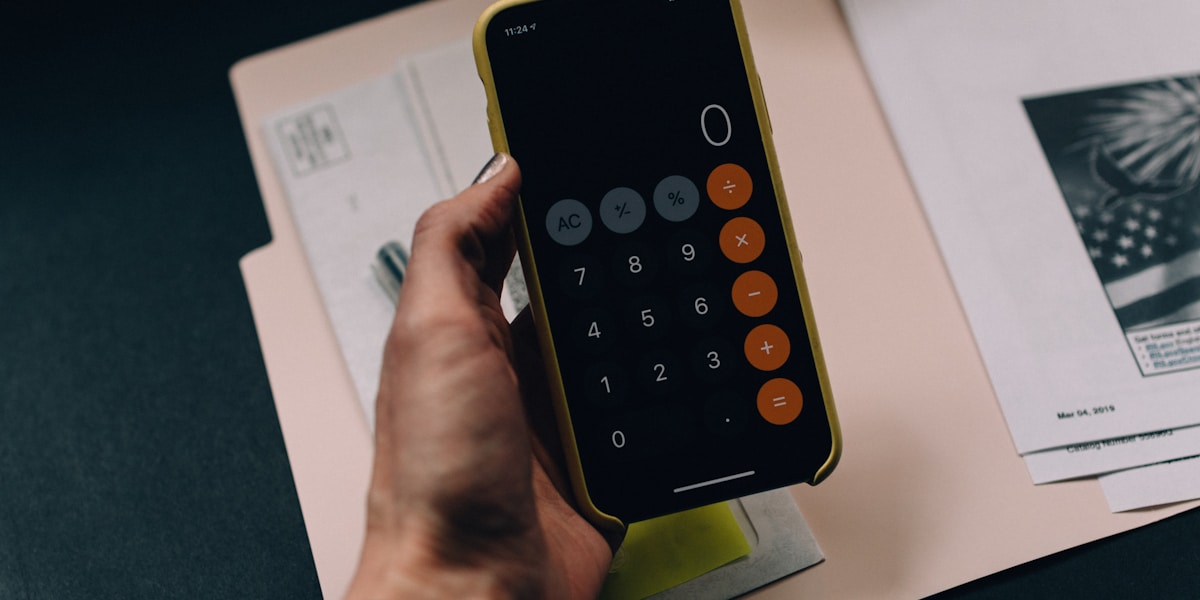The Psychology Behind Effective Waitlists: How to Build Anticipation That Converts
Discover the psychological principles that make waitlists irresistible. Learn how anticipation, scarcity, social proof, and cognitive biases transform casual interest into burning desire.

The Anticipation Engine: Why Waiting Increases Value
Psychological research reveals that anticipation activates the brain's reward centers more powerfully than actual possession. When people wait for something desirable, their perceived value increases exponentially with each passing day, transforming casual interest into burning desire.
This anticipation effect explains why waitlists outperform immediate access for product launches. The waiting period creates emotional investment that transforms prospects into committed customers who value your product more highly than those who get instant gratification.
Scarcity and Exclusivity: The Twin Pillars of Desire
Scarcity triggers loss aversion, a cognitive bias where people fear missing opportunities more than they value gaining them. Limited spots, countdown timers, and position numbers tap into this primal fear, compelling immediate action before the opportunity vanishes forever.
Exclusivity elevates social status and self-perception. Being selected for early access makes members feel special, chosen, and ahead of the curve. This psychological boost creates brand advocates who share their exclusive status to enhance their social capital.
Combine scarcity with exclusivity by showing waitlist position alongside total spots available. Messages like 'Position 847 of only 1,000 early access spots' create urgency while making members feel part of an elite group.
Social Proof: The Herd Mentality Advantage
Humans instinctively look to others for behavioral cues, especially in uncertain situations. Displaying real-time signup counts, testimonials, and company logos leverages this herd mentality, making joining feel like the obvious, safe choice.
Dynamic social proof that updates in real-time creates FOMO more effectively than static numbers. Notifications like 'Sarah from Google just joined' or '47 people signed up in the last hour' trigger competitive instincts and urgency.
QueueUp's social proof features automatically display signup momentum, creating psychological triggers that accelerate waitlist growth without manual updates or artificial inflation.
The Zeigarnik Effect: Incomplete Tasks Demand Attention
The Zeigarnik Effect describes how uncompleted tasks occupy mental space more than finished ones. Waitlist positions create open loops in members' minds, keeping your product top-of-mind until they gain access and close the mental loop.
Regular progress updates maintain the Zeigarnik Effect's power. Emails showing position improvements, approaching milestones, or new features keep the mental loop active and anticipation building throughout the waiting period.
Create multiple open loops through tiered benefits, referral rewards, and unlockable features. Each incomplete goal maintains psychological engagement, ensuring members think about your product daily rather than forgetting after signup.
Commitment and Consistency: The Psychological Lock-In
Once people commit publicly to wanting something, cognitive dissonance makes them justify and strengthen that desire. Waitlist signups represent micro-commitments that psychologically lock members into wanting your product more over time.
Escalating commitments deepen psychological investment. Start with email signup, then profile completion, then referral sharing, then feedback surveys. Each action strengthens commitment through the consistency principle.
Public commitments amplify the effect. When members share their waitlist position on social media or tell friends, they've staked their reputation on your product's value, making them more likely to convert when given access.
The Progress Principle: Visible Advancement Motivates Action
Seeing progress toward goals releases dopamine and motivates continued effort. Waitlist positions that improve through actions like referrals or engagement give members control over their advancement, increasing satisfaction and investment.
Visual progress indicators like bars, percentages, or position charts make abstract advancement tangible. Members who see they've moved from position 5,000 to 500 feel accomplished and motivated to continue activities that accelerate access.
Milestone celebrations at round numbers or percentage thresholds create psychological wins. Notifications like 'Congrats! You've reached the top 10%!' provide dopamine hits that strengthen positive associations with your brand.
Reciprocity: Creating Psychological Debt
The reciprocity principle states that people feel obligated to return favors. Providing value during the waitlist period through exclusive content, early insights, or special privileges creates psychological debt that members repay through engagement and purchases.
Free resources, guides, or tools specifically for waitlist members trigger reciprocity more than generic content. When members receive tangible value before paying anything, they feel compelled to reciprocate when given the opportunity.
Unexpected rewards amplify reciprocity effects. Surprise early access, bonus features, or personalized messages create disproportionate goodwill that transforms satisfied waiters into enthusiastic customers and advocates.
Authority and Expertise: Building Trust Through Competence
People defer to authority figures and expertise, especially in unfamiliar domains. Demonstrating deep knowledge through waitlist content positions your brand as the trusted expert, making purchase decisions feel safe and smart.
Behind-the-scenes content showing product development, founder insights, and technical challenges builds authority while humanizing your brand. Members feel privileged to witness the creation process, strengthening emotional connections.
Industry recognition, media mentions, and expert endorsements displayed during the waitlist period leverage authority bias. When respected figures validate your product, members' confidence in their decision to wait increases dramatically.
The Endowment Effect: Ownership Before Purchase
People value things more highly once they feel ownership, even before actual possession. Personalized waitlist experiences with saved preferences, custom dashboards, or reserved usernames create psychological ownership that increases conversion rates.
Account creation during waitlist signup triggers the endowment effect early. When members have already chosen usernames, configured settings, or uploaded avatars, they've psychologically claimed their space in your product.
Progress that carries forward after launch amplifies ownership feelings. Referral points, achievement badges, or priority features earned during waiting become valued possessions that members won't abandon.
Curiosity Gaps: The Information Tease
Curiosity gaps between what people know and what they want to know create psychological tension that demands resolution. Strategic information reveals during the waitlist period maintain curiosity while building anticipation for full access.
Partial feature reveals, blurred screenshots, and cryptic hints create curiosity gaps that keep members engaged. The desire to close these knowledge gaps makes gaining access feel urgent and necessary.
Time-released information maintains curiosity throughout long waitlist periods. Weekly feature spotlights, countdown reveals, or progressive disclosure ensure members always have something new to anticipate.
Community and Belonging: The Tribal Effect
Humans crave belonging and community membership. Waitlists that foster connections between members create tribal identities that transcend product features, making leaving feel like abandoning friends rather than canceling a service.
Exclusive communities for waitlist members satisfy belonging needs while building product investment. When members form relationships and shared experiences during waiting, they're psychologically committed to the collective journey.
Shared challenges, goals, or competitions unite waitlist members against external forces. Creating an 'us versus them' narrative with competitors or status quo solutions strengthens in-group loyalty and commitment.
The Peak-End Rule: Memorable Moments Matter Most
People judge experiences based on peak moments and endings rather than averages. Creating memorable highlights during the waitlist journey and spectacular access moments ensures positive memories that drive word-of-mouth and retention.
Surprise delights, unexpected rewards, and personalized touches create positive peaks that overshadow waiting frustration. One moment of genuine human connection or unexpected generosity can transform the entire waitlist experience.
The access moment represents the critical 'end' of waiting. Make it spectacular with personalized welcomes, celebration animations, and immediate value delivery that validates the entire waiting experience.
Cognitive Dissonance: Justifying the Wait
When behavior conflicts with beliefs, people change beliefs to match behavior. Members who wait weeks for access unconsciously convince themselves the product must be valuable enough to justify their patience, increasing perceived worth.
The longer and more difficult the wait, the stronger the dissonance resolution. Members who overcome obstacles, complete challenges, or persist through delays value the product more than those who faced no barriers.
Acknowledge and validate the waiting experience to amplify positive dissonance resolution. Messages like 'Your patience proves you understand true value' help members frame waiting as wisdom rather than wasted time.
Implementation Strategy: Psychology in Practice
Layer multiple psychological principles for compound effects. Combine scarcity (limited spots) with social proof (live signups) with progress (referral advancement) with reciprocity (exclusive content) for irresistible waitlist experiences.
QueueUp's psychology-driven templates incorporate these principles automatically, from social proof displays to progress tracking to community features that transform waiting into wanting.
Test psychological triggers with your specific audience. B2B audiences might respond more to authority and expertise while B2C audiences might prioritize social proof and exclusivity. Optimize based on data, not assumptions.
Transform Waiting Into Competitive Advantage
Master the psychology of effective waitlists to turn time delays into value multipliers. When implemented correctly, waiting becomes a feature that strengthens desire rather than a bug that frustrates users.
Start leveraging psychological principles in your waitlist strategy today. Create your psychology-optimized waitlist with QueueUp and watch as anticipation transforms into enthusiastic customers ready to evangelize your product.
Ready to Build Your Waitlist?
Start collecting signups today with beautiful, conversion-optimized pages.
Get Started Free →Related Articles

From Waitlist to Customer: The Ultimate Conversion Playbook
Master the strategies and tactics that convert waitlist signups into paying customers. From engagement sequences to launch strategies, learn what actually drives conversion.

Waitlist Pricing Strategies: From Early Bird Discounts to Enterprise Deals
Master waitlist pricing from early bird discounts to enterprise pilots. Learn psychological pricing principles, lifetime deal strategies, and conversion optimization tactics.

Building Community While They Wait: Engagement Strategies That Create Superfans
Transform your waitlist into a thriving community. Learn platform selection, content strategies, ambassador programs, and engagement tactics that create superfans before launch.